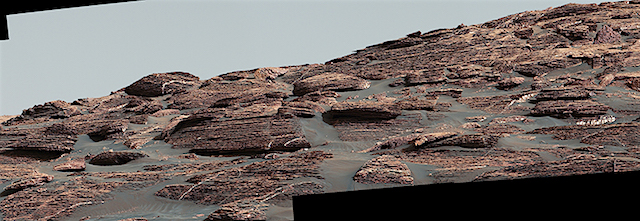 The surface of Mars today is cold, dry, and inhospitable to life. But was it always so? Past research indicates that the Red Planet may have been a very different world more than 3 billion years ago, with warmer weather, flowing rivers, lakes, and possibly even oceans of liquid water. These conditions would have been much more hospitable to nascent life-forms, if they existed.
The surface of Mars today is cold, dry, and inhospitable to life. But was it always so? Past research indicates that the Red Planet may have been a very different world more than 3 billion years ago, with warmer weather, flowing rivers, lakes, and possibly even oceans of liquid water. These conditions would have been much more hospitable to nascent life-forms, if they existed.
However, recent research is uncovering a different story.
“There have been two competing viewpoints about the Martian climate at this time: the traditional warm-and-wet view and the view that Mars was always cold and icy,” explained Jeffrey Andrews-Hanna, a Mars-focused planetary scientist at the University of Arizona.
Now, enter a third scenario: Billions of years ago, “Mars never really experienced a temperate Earth-like climate,” Andrews-Hanna added. Instead, a body of recent evidence points to an arid early Mars with pockets of wet patches.
Andrews-Hanna and Itay Halevy of the Weizmann Institute of Science in Israel are both probing the Red Planet’s distant past from afar to paint a better picture of regional dynamics of this early arid climate. They’ve zeroed in on Gale Crater and the rich data about the feature collected by NASA’s Curiosity rover. [More at links]








